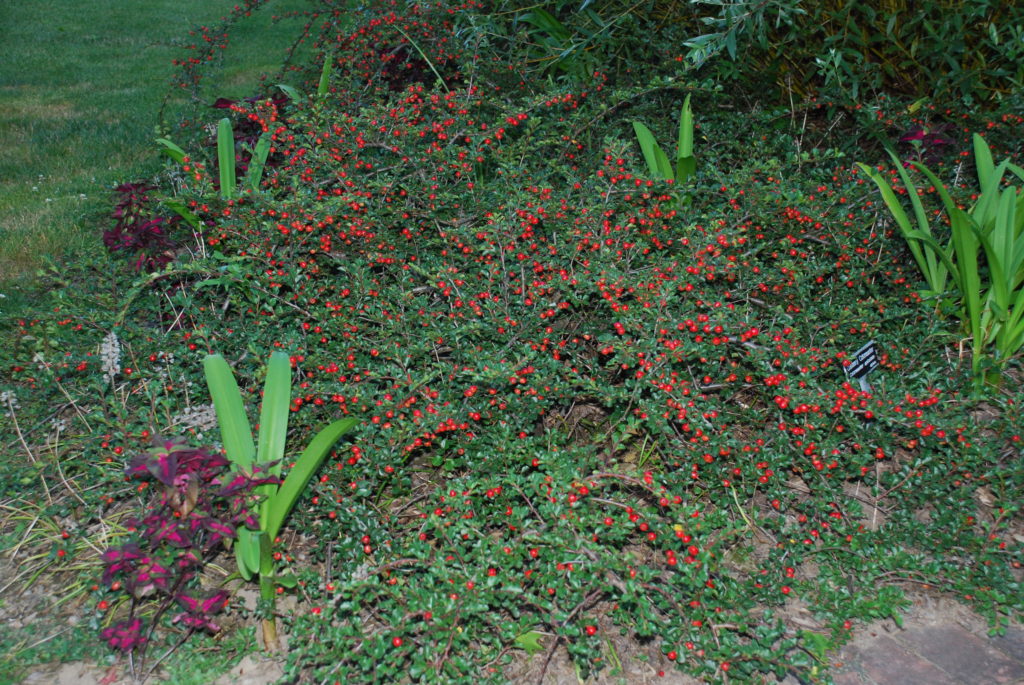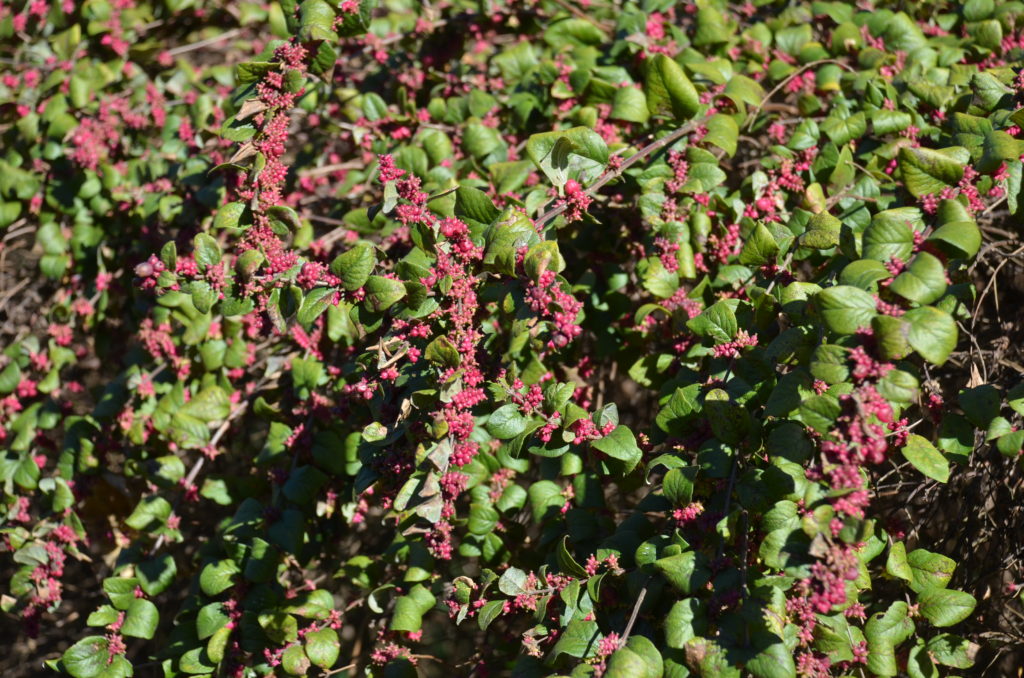Here are four ornamental ground covers that are laden with colorful berrries in the winter landscape. Two (partridgeberry and wintergreen) grow best in a partial shade woodland environment and two (coralberry and cotoneaster) prefer sunny environs. Berries offer tasty winter food for wildlife such as pheasant, grouse, squirrels and deer. Cut stems loaded with berries can be added to decorative indoor arrangements.

Cranberry cotoneaster (Cotoneaster apiculatus) is a low growing, widely branched deciduous shrub. It typically grows to 3 feet high with a spread of 4 – 6 feet. Tiny pink colored flowers appear in late spring and are visited by bees and other pollinators. In late summer red berries mature and persist into winter. The small glossy green spring-summer leaves (up to 3/4 inches long) turn attractive shades of purple, red and bronze in autumn. C. apiculata ‘Tom Thumb’ is a more compact form of cranberry cotoneaster. (zones 4-7).
Coralberry (Symphoricarpus orbiculatus), aka Indian currant, is a dense, suckering, native deciduousground cover found in Midwestern woodlands and fields (USDA hardiness zones 2-7). Coralberry spreads by runners to form impenetrable thickets in the wild. It mounds up 2-5 feet tall with arching stems. Clusters of white bell-shaped flowers (with a pink tinge) appear in summer. Flowers give way to colorful clusters of tiny coral-red berries (drupes) in autumn. Berries persist throughout the winter offering attractive color to a frosty landscape.

Wintergreen (Gaultheria procumbens) is a rhizomatous, creeping, woody, evergreen groundcover of the heath family found in the woodlands in Eastern North America. Erect stems clad with glossy, leathery, elliptic to oblong, dark green leaves (to 2 inches long) rise up from the rhizomes to 3-6 inches tall. Plants gradually forms an attractive ground cover over time. Waxy, nodding, bell-shaped, white flowers (3/8 inch long) open in the leaf axils in early summer (June-July). Flowers give way to edible bright red berries (3/8 inch diameter) that persist through winter. Fall leaves take on shades of purple. Leaves and fruit emit a wintergreen aroma. (zones 3-8).
Partridgeberry (Mitchella repens) is grown for its evergreen foliage, spring flowers and winter berries. This native low-growing groundcover can be found in acidic soils in moist woodlands and on stream banks in the Eastern and Midwest U.S. In the spring woodlands, small four-petaled white tubular flowers are arranged in pairs above the foliage. Bright scarlet red berries follow in late summer, fall and winter. (USDA hardiness zones 4–8).

 Posted in
Posted in 
